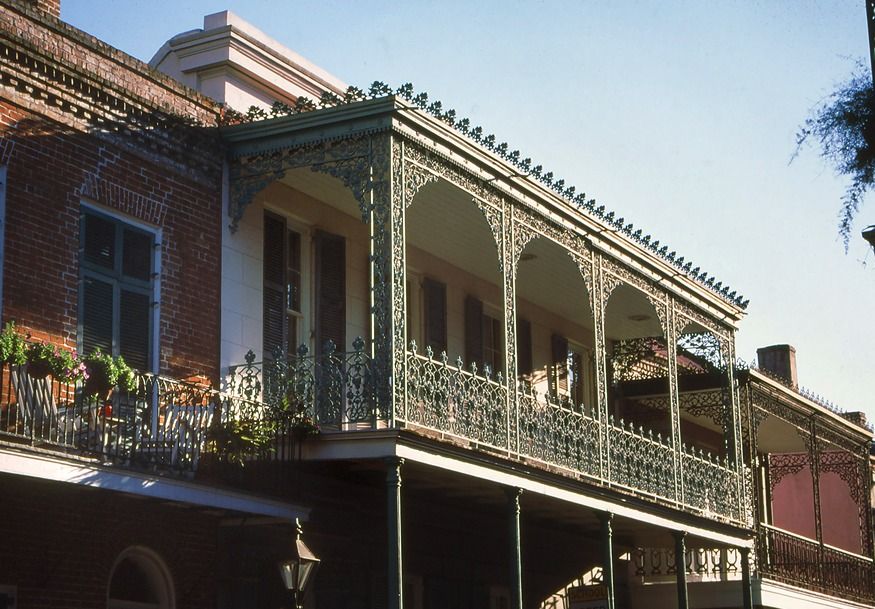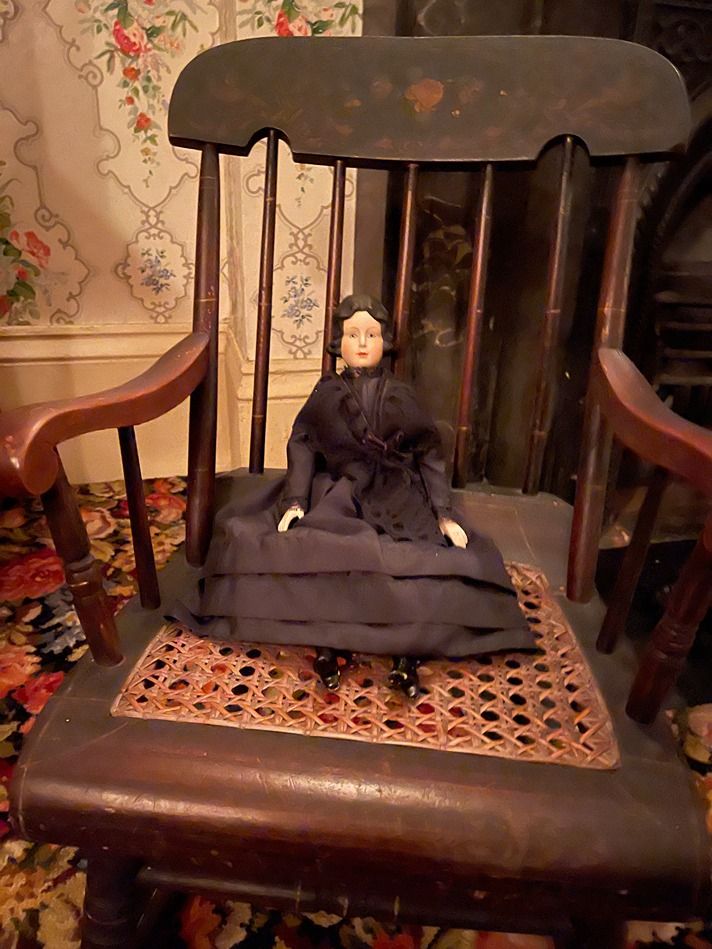Gallier House Tour
For those of you who love to learn about the 19th century history, architecture, and culture of the Creole people, the "Creole Death and Mourning Tour" exhibit opens on September 20 and runs through November 13 at the Gallier House. Daytime tours are available every day except Tuesday and special "after dark" tours including wine in the courtyard are offered on Saturday evenings only in the month of October. "The 'Creole Death and Mourning Tour' is something new and refreshing," said Danielle Glenn, a docent at the Gallier House who led this same tour last year. "The after-dark tours serve complimentary wine and you get access to the property after dark. It's really different with the candlelight providing a glimpse of the house in the darkness and all the outside noise melts away. You can really enjoy the spookiness of it."
Located at 1132 Royal Street, the Gallier House, a historic museum and home of the prominent architect James Gallier, Jr, is completely transformed for the "Creole Death and Mourning Tour." This exhibit highlights 19th-century mourning customs in New Orleans practiced by Catholic Creoles such as Mrs. Gallier and how death affected their family members living in the house, both free and enslaved. Death was pervasive during this time period with the dawn of the Civil War, and the rampage of such diseases like yellow fever and cholera.
"The 'Creole Death and Mourning Tour' is very popular," said Glenn, "It is a favorite that satisfies those who want a historical perspective with a touch of macabre."

History of the Gallier House
According to Glenn, the Gallier House was built in 1860 and the family experienced death predominantly throughout the years of 1866-1868. Prosperous families, such as the Galliers, held their funeral services in their home with the family member's body laid out in a coffin displayed in the front parlor. During the "Creole Death and Mourning Tour," the docent guides you through the house and discusses the mourning customs that were expected and exercised, including draping the front door, the coffin, the mirrors, and the portraits of the deceased in black crepe.
"The 'Creole Death and Mourning Tour' is a seasonal exhibition with a real coffin set in the front parlor," said Katie Burlison, curator for the Hermann-Grima + Gallier Historic Houses. "It was a solemn time, and death was everywhere during that time period around the Civil War. Mrs. Gallier lost her sister, her mother, and her husband all within a year's span, so this could be any one of their funerals."
Creole Mourning Customs
Also, Burlison noted that the attitude of mourning in a 19th-century household was one of respect in a sincere effort to remember the departed relatives and friends. "The reason why the funeral was held in the home during this time was because people were afraid of disease, and they could control who was there. The black and purple wreath was hung on the door to show that a household was in mourning. And similar to our announcements today, death notices were posted in public places including taverns and coffee shops."
Moreover, the "Creole Death and Mourning Tour" discusses extensively the impact of the death of a family member, beginning with a funeral service in the front parlor where candles are lit and draperies are closed. The tour continues through the house, while the docent points out meticulous collectibles and symbols of reverence for the deceased. "As you leave the parlor," said Peter Dandridge, curatorial associate of the Gallier House. "You can see how death has affected their daily routine. For example, the piano is closed because music was not appropriate during this time. The doll seen on the chair in one of the children's rooms is dressed like a widow. You can imagine that it was normal for these children to lose older relatives, and the little girls to be playing with these dolls dressed in mourning."
Another distinctive mourning custom was the black armband worn by family members and discovered in different places throughout the house. Dandridge explained, "The black band is a visual indicator telling you that someone has died. If you look at the stationary of Mrs. Gallier, for example, the width of the black border gives you an idea of when the person died. These are visual cues that people don't notice."
Historically the grieving widow was required to wear black during the 18-month mourning period, while the men had only six months. "The death of a husband was the longest mourning period," said Dandridge who is also a guide for the tour.
"We walk through the house and the slave quarters to talk about the different allowances for the Gallier family and the enslaved persons."

New Orleans Spooky Homes
Brimming with history and tradition, the "Creole and Death Mourning Tour" lasts about one hour and is available six days per week, Wednesdays through Mondays, at 9:30 a.m., 10:30 a.m., 12:30 p.m., 1:30 p.m., and 2:30 p.m. The museum is closed on Tuesdays. The cost of the tour for non-members is $17 for an adult and $14 for seniors, students, and the military. Museum members and children under 8 years old are free for daytime tours.
While the Gallier House offers that historic and cultural relvance to your list of haunted houses, there are other locations in the city to give you a good spook!

